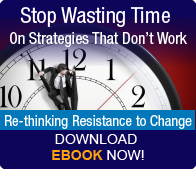There is a huge amount of investment being made in assessing and building employee engagement. It is a widespread belief that an “engaged” workforce is a necessary component of long-term organizational success. But what does an engaged employee really look like, and is that truly desirable behavior? How do so-called engaged employees help to build innovation and other transformational changes? 
We certainly don’t want to step on any toes here, but it seems that many organizations are spending a lot of time and effort chasing employee engagement without seeing that, what on the surface sounds good, is not necessarily desirable. Do we really want employees who just nod their heads when a Senior Leader gives an order from the top of the hill? Or do we want employees who are innovators and risk-takers who disrupt the status quo to drive change and new ideas?
Don Harrison, developer of the Accelerating Implementation Methodology (AIM), compares engaged employees to those who react as “lemmings to the sea,” following instructions from the top—people who just do what we tell them to do with no resistance. But don’t we want a workforce that questions what is happening around them? A workforce that feels they are safe enough to not just accept the status-quo. In fact, maybe what we really need is an organization that values resistance to change rather than an organization filled with a so-called “engaged” workforce!
Innovation and Resistance: Two Sides, Same Coin
Resistance is a function of disruption. The more someone believes their current work habits and patterns will be impacted, the greater the degree of resistance will be. Resistance is a natural function of any change process. Quite simply, it cannot be overcome, combatted, or eliminated.
Once you understand resistance is inevitable, it is easy to comprehend why the goal should not be an engaged organization with the absence of resistance. In fact, if you are looking to drive innovation into the organization you must actually hope for resistance, because that is a sign that the status quo is being disrupted. Innovation and resistance are two sides of the same coin.
If you go into any organization that is highly innovative, you will see employees who feel they are in a safe environment where their voices can and should be heard. Innovative organizations are not conflict free. Rather, they are resistance and conflict-laden. But here’s the secret… innovative organizations have personal and organizational structures to manage the conflict.
10 Behaviors to Help Manage the Resistance
So if we now assume that we can’t eliminate resistance, how do we manage it? Below are 10 behaviors:
- Create and maintain rapport with employees. Relationships should be built on trust. Ask questions to better understand their personal Frame of Reference.
- Establish clear expectations. People want to know what is expected of them and how they are going to be evaluated.
- Provide information in different Frames of Reference. Make sure you "translate" communication so that it really speaks to your audience. This includes using the language, examples, etc. that match up to the people you are dealing with. For example, the Frame of Reference of physicians will be different from the Frame of Reference of IT professionals, even if the change is the same in content.
- Ask open-ended questions. It's much better to get people talking!
- Focus on "what" can be done to create win-win situations. When people have input and involvement, they get a sense of control over their environment that helps to keep resistance levels down.
- Create a problem-solving climate. Don't whack people over the head for their ideas. Reinforce people for attempts to solve problems by giving them positive feedback. These reinforcements can be simple things like a handwritten note, or a free meal at the cafeteria.
- Focus on the issue, not on the personality. It's just a basic management skill-- don't make disagreements personal.
- Listen and be quiet!Limit your own speaking time to no more than 25% of the conversation. You will learn much more if you spend the bulk of the time listening rather than in talking mode.
- Communicate often. Managers are sometimes reluctant to communicate when all the information is not yet available. There is much to be gained when managers are transparent and admit that unknowns still exist. Again, always provide feedback opportunities.
So throw out all those Engagement Surveys. Take all the money you are spending on them and instead, invest in teaching managers how to create productive, reinforcing relationships with their direct reports. You will get much greater value, and will have the kind of employee engagement you really want.


